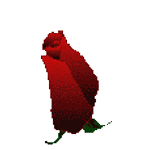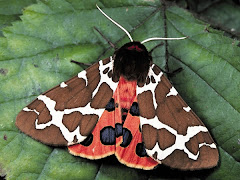De Amish is een protestantse geloofsgemeenschap
in Noord-Amerika. Het zijn volgelingen van
de Zwitser Jakob Amman (1644 - 1730) die in 1693
brak met de mennonieten. Door geloofsvervolgingen
in Zwitserland gedwongen trokken veel Amish naar het
platteland van de Elzas en de Palts.
Kleine groepen kwamen in Nederland, Polen en
Rusland terecht. Vanuit Europa emigreerden
veel Amish gemeenschappen vanaf 1737 naar
Noord-Amerika omdat hun levenswijze in Europa
vaak nauwelijks getolereerd werd.
Anderen sloten zich in de loop der tijd weer aan
bij de mennonieten of andere doopsgezinden.
~
The various Amish or Amish Mennonite church
fellowships are Christian religious denominations that
form a very traditional subgrouping of Mennonite churches.
The Amish are known for simple living, plain dress,
and reluctance to adopt modern convenience.

In de 18e eeuw nodigde William Penn de Amish en
andere religieuze minderheden zoals Quakers en
Hernhutters uit om naar zijn kolonie Pennsylvania
in Noord-Amerika te komen om zich daar te vestigen.
Zo'n 500 Amish gingen op deze uitnodiging in.
In de 19e eeuw, als reactie op politieke
(Franse revolutie) en economische
(Industriële revolutie) veranderingen, volgden
nog eens 3.000 personen. Als gevolg hiervan stonden
in 2005 zo'n 224.000 Amish geregistreerd in
22 Amerikaanse staten, waarvan het merendeel
in Pennsylvania, Ohio en Indiana.
~
The history of the Amish church began with a schism
in Switzerland within a group of Swiss and
Alsatian Anabaptists in 1693 led by Jakob Ammann.
Those who followed Ammann became known as Amish.
In the early 18th century, many Amish Mennonites
emigrated to Pennsylvania for a variety of reasons.
Today, the most traditional descendants of these
Amish Mennonites continue to speak Pennsylvania German,
also known as Pennsylvania Dutch.
There are also Old Order Amish communities, especially
in the American state of Indiana, where a dialect of
Swiss German predominates.
Over the years, there have been numerous divisions
among the Amish churches. The 'Old Order' Amish,
a conservative faction that withdrew from fellowship with
the wider body of Amish Mennonites in the 1860s,
are those that have most emphasized traditional
practices and beliefs. As of 2000, over 165,000 Old Order
Amish live in Canada and the United States.

De Amish hechten zeer aan hun doperse geloof
waarin ook een radicaal pacifisme is besloten, alsmede
eenvoudig leven, een hecht gezinsleven en
loyaliteit aan de geloofsgemeenschap.
Men plaatst zich bewust buiten de moderne wereld.
De Amish leven in agrarische gemeenschappen, nog
grotendeels zoals men in de eerste helft van de
19e eeuw leefde, zonder veel moderne voorzieningen
en met gebruikmaking van traditionele
landbouwmethoden en ambachtswerk.
Men draagt nog de eenvoudige plattelandskledij uit die tijd.
~
The rules of the church — the Ordnung — must be
observed by every member. These rules cover most
aspects of day-to-day living, and include prohibitions
or limitations on the use of power-line electricity, telephones,
and automobiles, as well as regulations on clothing.
Many Amish church members may not buy insurance
or accept government assistance, such as Social Security.
As Anabaptists, Amish church members practice
nonresistance and will not perform any type of
military service. Members who do not conform to
these expectations and who cannot be convinced to
repent are excommunicated.
In addition to excommunication, members may be shunned
— a practice that limits social contacts to shame the wayward member into returning to the church.
During adolescence (rumspringa or "running around"
in some communities), nonconforming behavior that
would result in the shunning of an adult who had made
the permanent commitment of baptism may meet
with a degree of forbearance.

Bijna alle Amish spreken Pennsylvania-Duits
('Pennsilfaani-Deitsch') met elkaar; een variant
van het Hoogduitse dialect dat nog steeds gesproken
wordt in het gebied waar de voorouders van de meeste
Amish vandaan kwamen: Zuid-Duitsland en Zwitserland.
Erediensten worden gehouden in het Hoogduits
of Pennsilvaans. Met niet-Amish spreekt men Engels.

De Old Order Amish rijden tegenwoordig nog steeds
met paard-en-wagen, gebruiken geen elektriciteit
en dragen ouderwetse kleding. De meer liberale
stromingen hebben wel elektriciteit, en gebruiken ook
auto's (Beachy- en New Order Amish).
Soms is dit alleen om moderne werktuigen op de
boerderij of werkplaats te kunnen gebruiken,
maar bij anderen gaat het om een bijna volledige
toepassing van alle moderne technologieën in
werk- en woonhuis. Vaak worden deze 'moderne Amish'
door de meer conservatieven niet meer als Amish beschouwd.
The Amish Mennonite movement descends from
the 16th century fellowship known as the Swiss Brethren.
The Swiss Brethren were Anabaptists, and are
often viewed as having been a part of a Radical Reformation. Anabaptist means "one who baptizes again";
a reference to those who had been baptized as infants,
but later adopted a belief in "believer's baptism",
and then let themselves again be baptized as adults.
These Swiss Brethren trace their origination to Felix Manz
(ca. 1498–1527) and Conrad Grebel (ca. 1498–1526),
who broke from reformer Huldrych Zwingli.
The Amish movement takes its name from Jakob Ammann
(c. 1656 —c. 1730), a Swiss Mennonite leader.
Ammann believed Mennonites — peaceful Anabaptists
of the Low Countries and Germany — were drifting away
from the teachings of Menno Simons and the 1632
Mennonite Dordrecht Confession of Faith.
Ammann favored stronger church discipline, including
a more rigid application of shunning, the social exclusion of excommunicated members. Swiss Anabaptists,
who were scattered by persecution throughout the
Alsace and the Palatinate, never practiced strict shunning
as had some lowland Anabaptists.
Ammann insisted upon this practice, even to the point
of expecting spouses to refuse to eat with each other,
until the banned spouse repented.
This type of strict literalism, on this issue, as well as
others, brought about a division among the Mennonites
of Southern Germany, the Alsace and Switzerland in 1693,
and led to withdrawal of those who sided with Ammann.
Swiss Anabaptism developed, from this point,
in two parallel streams. Those following Ammann
became known as Amish or Amish Mennonite.
The others eventually formed the basis of the
Swiss Mennonite Conference.
Because of this common heritage, Amish and
Mennonites retain many similarities.
Those who leave the Amish fold tend to join
conservative Mennonite congregations.

mannen dragen ringbaarden omdat zij geen snorren
mogen dragen. Snorren werden immers gedragen
door 18de-eeuwse Europese militairen






































3 opmerkingen:
Hi Anna, sorry I haven't been around lately. I'm here now, and I loved your post on the Amish. I love them, and I was so interested, about 13 years ago I flew to Pensilvania to visit a friend. She and I went to Landcaster County when the Amish live. We visited shopes and restrauants run by the Amish. I bought a quilt and other things from a dear Amish women.It's a very simple life, to simple for me I'm afraid.
I wanted to stop by and wish you a Merry Christmas. I've got alot of sewing and crocheting still to do, so I probably won't be back until after the Hollidays. I will think of you, and may all your dreams come true.
love cindy@stitches
Het is wat..dat zoiets nog bestaat!
Mooi dat deze mensen zo in hun geloof staan.
En je verwoord alles zo goed...ik heb vandaag weer wat geleerd..toppie!!
Liefs,
Marijke
@ Cindy
thanks my dear friend!
for you the best wishes for next year too!!!
Een reactie posten